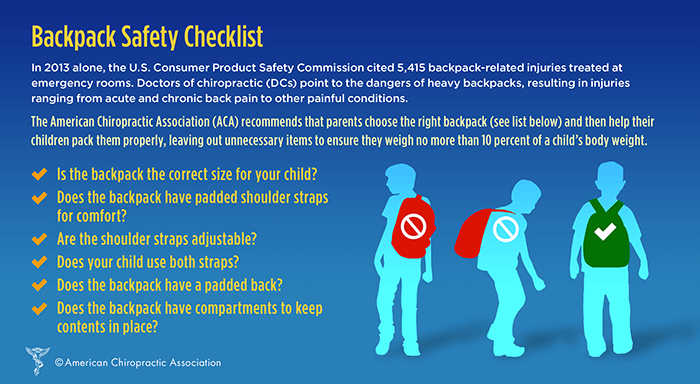Ice or Heat?
Clear Lake Chiropractor Comments: A common question that I get is “When do I use ice and when do I use heat?” Most people have been told to use ice for the first 24, 48, or 72 hours and then to switch to heat from their coach or parent. This works for simple sports injuries, but isn’t always the best for every situation.
First, you need to know WHY you are using the ice or heat to begin with.
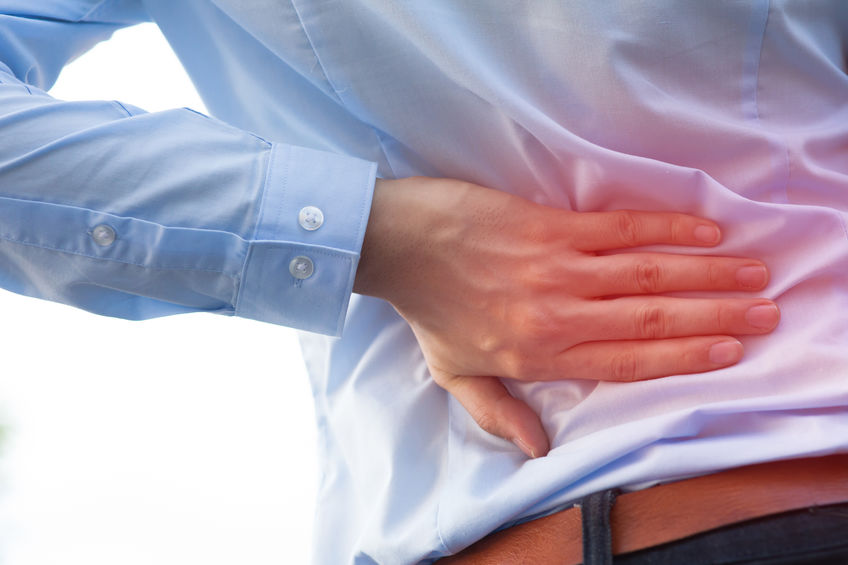
Ice is good for when there is swelling or inflammation from an injury or aggravation. The vasoconstriction from the ice will help reduce the fluid in an area and help to prevent swelling of the affected area. Don’t use ice for more than 20 minutes as it can injure areas with poor circulation and cause tissue damage.
Heat brings more blood to an area which helps to relax the muscles, reduce joint stiffness, and ease muscle spasms. This is good for sore and achy muscles. Don’t use heat on an open wound or cut as it can cause more bleeding.
An easy way to remember which one to use is “If you can point to a specific area and it is painful, then use ice. If you can’t find a specific area that is painful, but an area is sore and achy, use heat.”
If you are in doubt, use ice. 😉
Dr. Ward Beecher practices at Beecher Chiropractic Clinic at 1001 Pineloch, Ste 700 Houston, TX 77062. You can schedule an appointment at www.BeecherChiropractic.com or by calling (281) 286-1300. If you have any questions regarding this blog, please comment below!
Spondylolisthesis – What Is That?
To download a copy of this week’s newsletter, please click here.
Bay Area Chiropractor Comments: Ashley was competing in a gymnastics tournament last year and during one of her floor routines, noticed a sharp pain in her low back after performing a series of back hand springs. She said she landed crooked on the last of four back hand springs which resulted in immediate pain in the middle of the low back at the beltline. She has had pain in the low back before and initially, didn’t think this was any different from past episodes but when the pain didn’t improve after a week, she asked her parents if she could see their chiropractor for an adjustment. Her chiropractor took her history and was alerted by the mechanism of injury – the rapid onset of pain after bending backwards and landing crooked during her routine. The low back was carefully examined and during the range of motion testing, Ashley’s backward bending test was very painful and limited in motion. When bending backwards at an angle with pressure applied in the low back, sharp pain stopped the test immediately. Her neurological tests were normal and she could bend over and touch her toes – in fact, that felt good. Her chiropractor had a strong suspicion of what had happened and ordered an x-ray to see if the preliminary diagnosis was accurate. The x-rays looked normal but with the history of extreme backward bending and immediate pain onset, a bone scan was ordered which was positive for a stress fracture in the back part of the vertebra. Unfortunately, this meant no gymnastics for 3 months and the use of a low back brace was recommended. The good news is that the back pain was gone within a month and follow-up x-rays 3 months later did not reveal a visible fracture line in the vertebra. Ashley was able to resume gymnastics and competed with success and no low back pain in Houston.

So, what is spondylolisthesis? As depicted in the side view low back x-ray (left), it is the sliding forward of one vertebra over another (see arrow). It occurs in about 7% of the western population and up to 30-50% in cultures that carry their young on their back (like a back pack). It is reported that most people who develop spondylolisthesis acquire this between ages 6 and 16 due to a developmental weakness in that part of the spine, though the cause can be traumatic, like in Abby’s case where rapid, uncontrolled backward bending occurs. It can also gradually occur over time (called “degenerative”), usually not found before age 50-60, where no single event can be recalled by the patient. There is also a congenital type that can be hereditary where one is born with it, though most authorities feel it is acquired at an early age. The good news is that it is often stable and does not require surgery. In the more severe case, the nerves and/or spinal cord can get pinched in which case surgery is necessary. The symptoms would then include leg pain, weakness, and/or numbness with or without significant low back pain. Most cases however, can be successfully managed without surgery and do not compromise the nerves or cord.
Chiropractic has been found to be very successful in managing patients with spondylolisthesis as the pain generator is often above or below the slipped vertebra. In fact, in one report, chiropractic was found to be more beneficial than medical care for this condition (Mierau D, et.al., J Manip Physiol Therap 1987;10:49-55).
Dr. Ward Beecher practices at Beecher Chiropractic Clinic at 1001 Pineloch, Ste 700 Houston, TX 77062. You can schedule an appointment at BeecherChiropractic.com or by calling (281) 286-1300. If you have any questions regarding this blog, please comment below!
Does the Use of a Low Back Support or Brace Really Make a Difference?
To download a copy of this week’s newsletter, please click here.
Clear Lake Chiropractor Comments: “Do you think a back brace will help my condition?” This is a question that is frequently asked of many health care providers who treat low back pain. The answers typically vary, as there is support for and against the use of a brace when low back pain is present.

The use of back braces had been considered a “standard” in the treatment of patients with LBP for many years. One argument against using back braces centers around becoming “dependent” either physically or mentally on its use and this has long been a concern among health care providers. Braces are particularly helpful when the patient cannot stop performing needed activities, such as work. The brace helps to reinforce proper bending and lifting by minimizing rotation and side bending. The patient needs to also take breaks from the brace when it is not needed or during periods of rest. Ultimately most people will not need the brace as the problem is resolved and supporting muscles are developed to prevent aggravation.
There are many types of back braces. Some are narrow and are particularly favored when frequent bending and/or twisting movements are required by a job, sport, or other daily activity. Other braces are taller in the back and taper in the front, which give better support but still allow some bending / twisting movements. Some braces are more rigid and can actually stop movement in certain directions. These types include a hard, rigid surface that is placed in the area of the back where movement is not desired. These are used at times when there are fractures of the spine, after spinal surgery and in scoliosis bracing. Some braces are to be worn low on the pelvis to support that area, while most are placed in the center of the low back region. There are also rib belts sometimes used when ribs fracture, soft and rigid neck braces sometimes used after car accidents, and braces for the arms or legs. The decision to use a brace rests on the degree of injury and the patient’s ability to avoid certain activities or positions. When the injury is significant and/or the patient cannot control his/her activities (such as work), then the use of a brace may be one of the most important treatment approaches for that patient. It’s similar to having stitches when a deep or wide cut occurs. Ask us about the use of supports, braces, or belts if you or your family or friends are suffering with low back pain.
Dr. Ward Beecher practices at Beecher Chiropractic Clinic at 1001 Pineloch, Ste 700 Houston, TX 77062. You can schedule an appointment at BeecherChiropractic.com or by calling (281) 286-1300. If you have any questions regarding this blog, please comment below!
Chiropractic Alternative to Back Surgery?
To download a copy of this week’s newsletter, please click here.
Clear Lake City Chiropractor Comments: A large-scale study from Great Britain has shown results that’ll make you wonder whether back surgery is always necessary (Bhattacharyya M. Does the risks and benefits of spinal manipulation in patients with low back pain as a nonsurgical approach translate into better outcomes in routine clinical care: a prospective observational cohort study. J Bone Joint Surg 2008;90B:Suppl.492.). One hundred two patients were followed while they waited to see a spinal surgeon. The patients had disc herniations confirmed by MRI and had sciatic/leg pain. They had also previously tried 4 weeks of medications (non steroidal anti-inflammatory drugs), which had provided no benefit.
While they waited to see the spinal surgeon, they were referred for manipulations provided by experienced chiropractors. The adjustments were given five days per week. 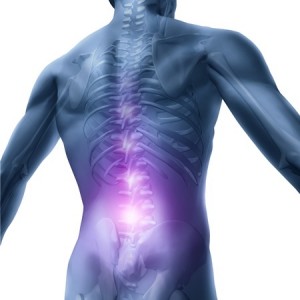
A few patients had some transient increase in pain and there were three treatment failures (out of 102). Overall the results were very encouraging with patients moved off of the surgery wait-list.
But how is this possible? The disks are the hard cartilage separating each vertebra in your lower back. When this ligament sprains it can bulge onto a nearby nerve, causing back pain or pain down your leg. Precise adjustments use the bones as levers to affect the alignment of these vertebrae and the movement of the joints in the lumbar spine. If alignment is improved, then there is better posture and distribution of loads. When the mobility is more symmetrical, this also may prevent unequal loading of the soft tissues. Helping these mechanical aspects to heal can be enough to lessen your pain and help you to regain your quality of life. In some cases, it seems it may even keep you from a potentially unnecessary back operation.
Based on the results of the study, anyone without need of emergency surgery should try chiropractic care before having an elective operation for a disk or sciatica/leg pain disorder. Emergency problems would be symptoms like bowel and bladder dysfunction and numbness over the tailbone or hips. Most patients do not fit into the emergency-surgery camp.
Dr. Ward Beecher practices at Beecher Chiropractic Clinic at 1001 Pineloch, Ste 700 Houston, TX 77062. You can schedule an appointment at BeecherChiropractic.com or by calling (281) 286-1300. If you have any questions regarding this blog, please comment below!
Do You Really Need an X-Ray if You Have Back Pain?
Chiropractor Near Clear Lake City Comments: Most chiropractic patients have spine x-rays taken of their lumbar. Since x-rays do carry a very small risk of tissue damage, this risk needs to be outweighed by benefits. So, how are x-rays used in our clinic?
First, spine x-rays can tell us about medical conditions that may require referral to another health care provider such as a spine tumor or an infection. Fortunately, these diseases are very rare, but they do need to be considered in every patient, especially those who may have certain “red flags” such as back pain at night or rest, or if there is also a fever. In addition, certain severe traumas (like a fall) can produce fractures. In an older adult with osteoporosis, or someone taking steroid medications over years, even a minor trauma event can be enough to cause a break, because the bone is in a weakened condition.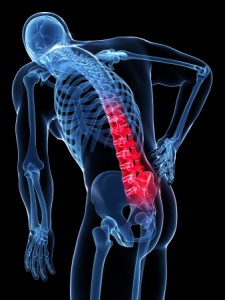
After these very rare conditions are ruled out, your x-rays can provide important information about your anatomy and physical posture. For example, curvatures of the lumbar spine, such as scoliosis, are virtually undetectable without a spine x-ray, and without these you would not know if you would need scoliosis treatment. If we know how your spine is deviated, this information can help direct the adjustment more specifically. Sometimes leg lengths are uneven and a person may require an orthotic (arch support) or heel lift to level the foundation for your spine. About one in ten patients will have an unequal leg length of a centimeter or more.
In terms of the bone anatomy, x-rays can show the planes and angles of the discs between bones and whether any degeneration is present or if you have any herniated discs. If the degeneration is advanced, then a natural bone fusion may be present. It should be obvious that if the spinal anatomy does not allow movement or if the joints are literally fused movement is impossible, then chiropractic adjustments are not appropriate.
Spine x-rays can also show us how one area of the spine mechanically compensates for a deviated area below. Sometimes, pain may be present at compensatory areas but without knowledge of the cause of this deviation, care may be less optimum. Just as the lumbar spine may compensate for a pelvic problem, so to can a neck condition be caused by abnormal postural lower down the spine. The x-rays can show us how case management needs to be altered to reflect your individual needs.
In any case, x-rays are important to reach an accurate diagnosis, which is the first step on the road to recovery and regaining your vitality and quality of life.
Dr. Ward Beecher practices at Beecher Chiropractic Clinic at 1001 Pineloch, Ste 700 Houston, TX 77062. You can schedule an appointment the best chiropractor in houston by calling (281) 286-1300. If you have any questions regarding this blog, please comment below!
Low Back Pain and Excessive Weight
Houston Chiropractor Comments: Two things that are epidemic in the U.S. are low back pain and obesity (being overweight). The two go hand-in-hand and while excessive weight may not be the only cause of your pain, it does makes matters worse by aggravating your pain through increased loading the disks of the low back. In addition, most people with low back pain or who are excessively heavy are also very inactive.
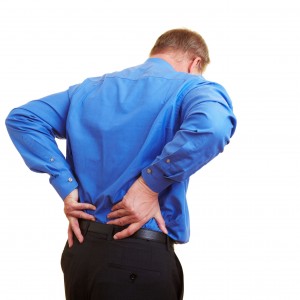 The first step is to perform movements that don’t increase pain. For most people, walking can still be done. If your back hurts when you walk or you are so heavy, that walking causes your knees to ache, then you may need to start by walking in a pool. The important thing is to get moving because weight-loss will be helped if you can burn more calories. Walking will also improve the strength of your low back muscles, which may lessen your pain, making exercise more possible.
The first step is to perform movements that don’t increase pain. For most people, walking can still be done. If your back hurts when you walk or you are so heavy, that walking causes your knees to ache, then you may need to start by walking in a pool. The important thing is to get moving because weight-loss will be helped if you can burn more calories. Walking will also improve the strength of your low back muscles, which may lessen your pain, making exercise more possible.
Over the years, the gradual increase in our waist size just sort of creeps up on us. When our back begins to give way, we then realize what a barrier being overweight has become.
Getting rid of your excessive weight is a simple formula of burning more calories than you consume. But, losing weight is not easy. Your genes will tell you to consume more because eating less than you need in a given day is not life sustaining. If you ate 500 less calories than you need each day, after a year or so, you’d be down to 80 or 90 pounds (depending on where you began) and eventually you would die. This is what you are up against when you’re losing weight. The body tells you “don’t do this” and gives you the craving to eat what you need. Despite this self-preservation mechanism, losing weight is possible and getting down to a proper weight is doable. For some people, psychological issues may be more at play. Do you eat to cover up or distract you from pain or anxiety? Are you really hungry, or has eating become a way to compensate for something more painful or difficult to confront?
Dr. Ward Beecher practices at Beecher Chiropractic Clinic at 1001 Pineloch, Ste 700 Houston, TX 77062. You can schedule an appointment at BeecherChiropractic.com or by calling (281) 286-1300. If you have any questions regarding this blog, please comment below!
Dr Beecher’s July 20 Weekly Chiropractic Newsletter
WEEKLY HEALTH NEWS UPDATE
Week of Monday, July 20th, 2015
To download a copy of this newsletter, click here.
Mental Attitude: Bullied Teens at Risk for Depression Later in Life. Teens who are bullied appear to be at a higher risk for depression when they reach early adulthood when compared with their peers who were not bullied during adolescence. The study involved 4,000 teens and found that teenagers who were frequently bullied at age 13 were twice as likely to be depressed at age 18. Of the 4,000 teens involved in the study, 700 reported being bullied more than once a week. BMJ, June 2015
Health Alert: Poorly Controlled Diabetes Results in Longer Hospital Stays. Two new studies presented at the 75th Scientific Sessions of the American Diabetes Association state that diabetics who fail to control their blood sugar levels tend to have longer and more costly hospital stays. According to researchers, hospital stays for diabetics with poor blood sugar control can last an average of three days longer at a total cost nearly $2,500 greater than diabetics who do a better job at managing their blood sugar levels. Scripps Health, June 2015
Diet: BPA in Canned Foods Less Common. A new report claims that up to 30% of canned foods contain the chemical bisphenol A (BPA) in their linings. According to previously published research, BPA exposure may be associated with abnormal fetal development, obesity, and reproductive health issues, among other health problems. The good news is that fewer food manufacturers are using BPA to line the inside of their cans when compared with the available historical data. Renee Sharp, a Director of Research at the Environmental Working Group adds, “Definitely the trend is moving away from BPA, but there is a long way to go.” Environmental Working Group, June 2015
Exercise: Certain Physical Activities Associated with Better Sleep. Participating in activities such as walking, aerobics, calisthenics, running, weight training, yoga, and Pilates may improve your sleeping habits. Researcher leader Dr. Michael Grandner adds, “Although previous research has shown that lack of exercise is associated with poor sleep, the results of this study were surprising. Not only does this study show that those who get exercise simply by walking are more likely to have better sleep habits, but these effects are even stronger for more purposeful activities, such as running and yoga, and even gardening and golf.” Associated Professional Sleep Societies, June 2015
Chiropractic: Back Pain Associated with Knee Pain. According to researchers at the Tabriz University of Medical Sciences in Iran, patients with knee complaints are significantly more likely to also have a history of lower back pain. Though the researchers were unable to conclude whether or not the relationship between back pain and knee pain is causative in either direction or if both may be secondary to another issue, they do recommend that doctors consider a patient’s back pain history when assessing and managing knee pain complaints. The Journal of the Pakistani Medical Association, June 2015
Wellness/Prevention: Bug Bites & Bee Stings. While most insect bites aren’t serious, experts advise going to the emergency room if you or your child develop the following ailments after a bite or sting: difficulty breathing, a feeling that your throat is closing, swelling lips, swelling tongue or face, chest pain, racing heartbeat, dizziness, headache, or vomiting. Also, beware of a red rash that looks like a bullseye target or a fever with a spreading red or black spotty rash. Dr. Margaret Parsons, an associate clinical professor of dermatology at the University of California writes, “Although most bug bites and stings do not turn into a severe or even fatal illness like Rocky Mountain spotted fever, it’s important to pay attention to your symptoms.” American Academy of Dermatology, May 2015
Quote: “True love is not so much a matter of romance as it is a matter of anxious concern for the well-being of one’s companion.” ~ Gordon B. Hinckley
This Weekly Health News Update is compliments of Dr. Ward Beecher and Beecher Chiropractic Clinic. If you have any questions or comments, please contact us at 281-286-1300 or BeecherChiropractic.com .
Dr Beecher’s December 22 Weekly Chiropractic Newsletter
To download Dr. Beecher’s Weekly Newsletter , please click here!
WEEKLY HEALTH NEWS UPDATE
Week of Monday, December 22nd, 2014
Mental Attitude: Shift Work Can Impair Brain Functioning. Working shifts, rather than fixed hours, may impair brain function over time. Investigators found that long-term shift work for ten or more years has a negative impact on brain health. The researchers believe that disruption of circadian rhythms is the most likely cause of psychological stressors that lead to impairment. They note that the effects can be reversed, but the process may take up to five years. The research team writes, “The cognitive impairment observed in the present study may have important safety consequences not only for the individuals concerned, but also for society as a whole… given the increasing number of jobs in high-hazard situations that are performed at night.” Occupational & Environmental Medicine, November, 2014
Health Alert: Medicare Penalties Will Hurt Vulnerable Patients with COPD. Experts say that new polices regarding hospital readmissions for chronic obstructive pulmonary disease (COPD) will penalize at-risk patients. Since 2012, the Centers for Medicare & Medicaid Services (CMS) has reduced payments to hospitals that exhibit excessive readmission rates for conditions like heart failure, heart attack, and pneumonia. Recently, they added elective hip and knee replacements and chronic lung disease to this list. Poor or medically complex patients are at a higher risk for readmissions because of an assortment of socioeconomic and health factors. Many are seen at teaching hospitals and “safety-net” hospitals, which will bear the brunt of the new guidelines. The experts explain that no interventions are known to effectively reduce COPD readmissions so it’s unclear what a hospital can do to prevent them. Their findings suggest that the policy should be changed due to penalties that target hospitals that care for vulnerable patients. American Journal of Respiratory Critical Care Medicine, November 2014
Diet: Drink More Water and Less Cola to Avoid Kidney Stone Recurrence. Recently released evidence-based guidelines from the American College of Physicians recommend that patients with a history of kidney stones can help reduce their risk for kidney stone recurrence by increasing their fluid intake so as to produce at least two liters of urine per day and decreasing their cola consumption, the most common dietary source of phosphoric acid. Annals of Internal Medicine, November 2014
Exercise: Fun Physical Activity Helps Young Students. New research reveals that just four minutes of high-intensity interval exercise can improve the behavior of elementary school students. Researchers found that a brief period of in-classroom physical activity led to reduced fidgeting and inattentiveness in the classroom during the following 50 minutes. Nutrition and Metabolism, October 2014
Chiropractic: Smoking Associated with Chronic Back Pain. If you’re a smoker and have low back pain, here’s another reason to kick the habit. A new study has found that people who smoke are three times more likely to develop chronic back pain than those who do not smoke. Using MRI, researchers observed that smoking increases brain activity in an area of the brain that has previously been associated with chronic pain development. Bottom line, in addition to seeking care to treat their back pain, smokers with chronic pain should also engage in a smoking cessation program. Human Brain Mapping, October 2014
Wellness/Prevention: Pro-Inflammatory Diet Increases Prostate Cancer Risk. Using data provided by about 2,700 adult Italian males, researchers have linked pro-inflammation diets to increased prostate cancer risk. A pro-inflammatory diet is one that includes high levels of sugar, polysaturated vegetable oils, trans fats, dairy products, feed-lot raised meat, red meat and processed meat, alcohol, refined grains, and artificial food additives. British Journal of Nutrition, November 2014
Quote: “Reality provides us with facts so romantic that imagination itself could add nothing to them.” ~ Jules Verne
This Weekly Health News Update is compliments of Dr. Ward Beecher and Beecher Chiropractic Clinic. If you have any questions or comments, please contact us at 281-286-1300 or BeecherChiropractic.com .
Dr Beecher’s September 22 Weekly Chiropractic Newsletter
To download Dr. Beecher’s Weekly Newsletter, please click here!
WEEKLY HEALTH NEWS UPDATE
Week of Monday, September 22nd, 2014
Mental Attitude: Stress During Pregnancy May Increase Asthma Risk in Children. Past studies have shown that exposure to stress during pregnancy can increase a child’s risk for premature birth, low birth weight, and development problems. Now, a new animal-based study suggests that maternal stress during pregnancy, even just one high-stress episode, can also increase an offspring’s risk for developing asthma. American Journal of Physiology, July 2014
Health Alert: Today’s Young Adults. Compared with previous generations, today’s young adults (ages 18-24) are more likely to be high school graduates, attend college, and less likely to smoke cigarettes. National Institutes of Health, July 2014
Diet: Kidney Disease Patients Should Avoid Southern-Style Diet. Newly published research suggests that a “Southern- style diet” is linked with higher death rates among kidney disease patients. Researchers found that individuals with kidney disease who regularly consumed a Southern diet had a 50% higher risk for death compared to those who did not regularly consume a Southern-style diet. Lead author Dr. Orlando Gutiérrez writes, “This is the first study to identify a regionally specific diet pattern that is highly associated with adverse outcomes among persons with kidney disease. It’s well known that the Southern region has poor health outcomes in a number of different areas including stroke, heart disease and
sepsis, and that the style of diet plays a role.” American Journal of Kidney Diseases, July 2014
Exercise: Small Amounts of Exercise Protect Against Memory Loss in Elderly. An animal study involving rats found that small amounts of exercise protected older rodents from memory loss and exaggerated inflammation in their brains following infection. This is the first study to show that voluntary exercise reduces aging-induced susceptibility to the cognitive impairments that follow a bacterial infection. The Journal of Neuroscience, August 2011
Chiropractic: Back Pain and Anger. Do people with back pain have shorter fuses? Using data provided by chronic back pain patients and their spouses, researchers have found that individuals with back pain appear to be quicker to anger and get angry to greater levels the more their pain interferes with their ability to function normally. Healthy Psychology, August 2014
Wellness/Prevention: Protect Your Eyes When Using a Swimming Pool. Swimming in chlorinated pools can wash away the outer film layer of the eye, increasing a swimmer’s risk for infections such as pink eye. Chlorine can also lead to red and irritated eyes, as well as blurry vision. The following tips can be helpful in preventing or easing eye problems associated with swimming in chlorinated pools: wear water-tight goggles, remove contact lenses, use lubricating eye drops, and flush eyes with clean drinking water after swimming. Swimmers should seek medical attention if they suffer from any of the following after leaving the pool: red eyes that are draining fluid, blurry or distorted vision, or severe pain. Meadowlands Hospital Medical Center, July 2014
Quote: “When you arise in the morning think of what a privilege it is to be alive, to think, to enjoy, to love …”
~ Marcus Aurelius
This Weekly Health News Update is compliments of Dr. Ward Beecher and Beecher Chiropractic Clinic. If you have any questions or comments, please contact us at 281-286-1300 or BeecherChiropractic.com .

